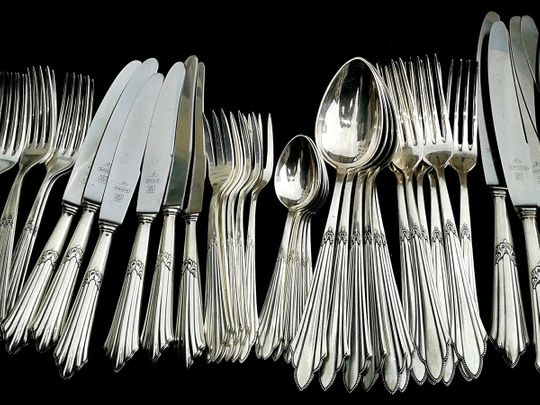
The knife, spoon, and fork in your kitchen drawer are some of the oldest things in history.
Click start to play today’s Word Search, where you can spot utensils commonly found in kitchens around the world.
Of the three, knives came first, for obvious reasons. The earliest knives were made of flint and were used as weapons since prehistoric times. But if you’re wondering why the knives we eat with are far less sharp than the ones we cook with, you have to go back to King Louis XIV of France to get your answer. According to the Smithsonian magazine, the official journal published by the Smithsonian Institution in Washington, US, Cardinal Richelieu, the king’s chief minister, used to find it disgusting when diners used the pointy edge of their knives to clean their teeth after a meal. So, King Louis XIV decreed in 1669 that knives at the dinner table should have a ground-down point. A victory for hygiene everywhere!
Spoons have been used as eating utensils since paleolithic times. The US-based California Academy of Sciences website states that in that era, people would use shells or rounded chips of wood as spoons. In the Middle Ages, the aristocrats would eat with spoons made from precious metals, and when pewter became commonly used in the 14th century, spoons too, became easily affordable for the general public.
Forks are the most recent of the three kitchen essentials, but they probably have the most chequered past. In 1004, the Greek niece of the Byzantine emperor indulged at her wedding feast with a gold fork. She was getting married to the doge’s son in Venice. At the time, most Europeans ate with their fingers and knives, so the suspicious trident-shaped utensil was seen as sinfully decadent by the local clergy. When the bride died of the plague a few years later, some even said it was divine punishment for her vanity.
But a few centuries later, forks became commonplace in Italy. It's partly in thanks to Italian noblewoman (and later the Queen of France) Catherine de Medici. When she was married to the future King Henry II, she brought over a collection of silver forks to France in 1533, and acceptance of forks soon followed.
Who knew the inconspicuous cutlery in our kitchen drawers drew such strong emotions in the past? Play today’s Word Search and let us know if you enjoyed it at games@gulfnews.com.









